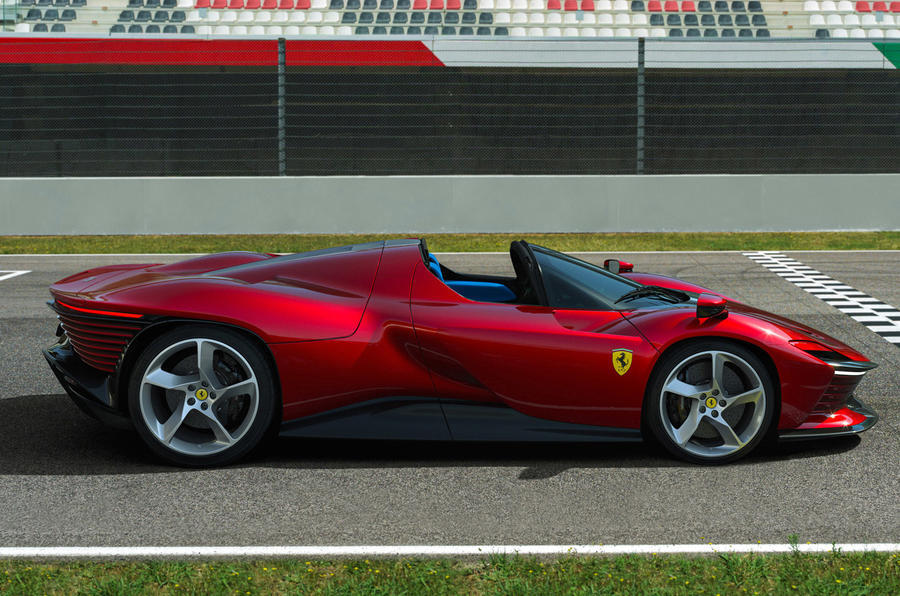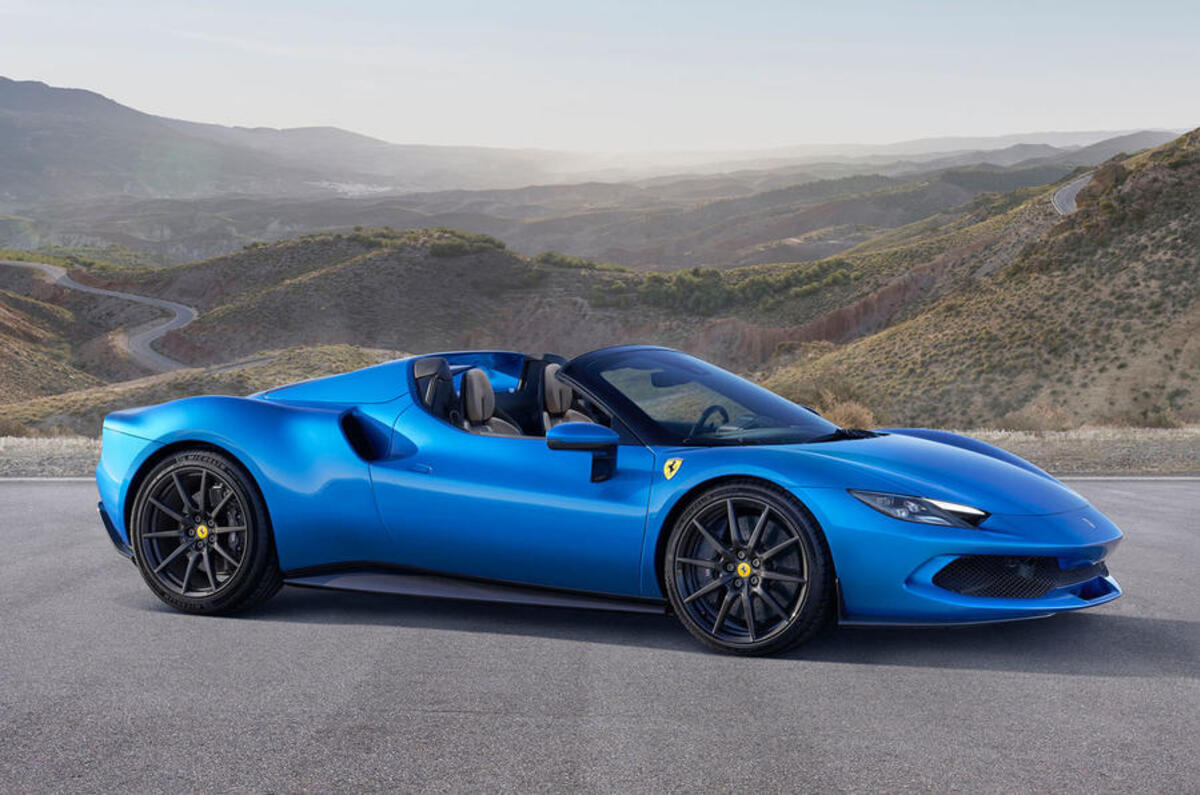Ferrari will launch 15 new cars between 2023 and 2026, among which will be its first pure EV, a new range-topping 'Supercar' model and several additions to the ultra-exclusive Icona series.
Details of Ferrari's upcoming product roadmap were announced today as part of its Capital Markets Day investor presentation, during which bosses spoke about the transition to electrification but were adamant about the continued role of combustion powertrains.
There will be "three powertrains with distinctive driving emotions". Across the brand's portfolio by 2026, 40% of the cars will be pure combustion and 60% will be electrified - either purely or hybridised.
The firm currently has five model lines in series production – the Ferrari Portofino M, Ferrari Roma, Ferrari 812 Superfast, Ferrari 296 GTB and Ferrari SF90 – already making for healthy mix between pure-combustion and hybrid models.
However, the ramp-up of electrification in the coming years, with a view to ultimately becoming carbon neutral by 2030, will not come at the expense of continued combustion engine development. Even in 2030, pure-combustion models will still account for 20% of all models sold.
It is possible that the firm's pure-combustion engines will continue to find a home in the limited-run Icona series models – in the vein of the recently revealed SP3 Daytona – which together with the upcoming 'Supercar' model will account for less than 5% of the firm's total output by 2026.

However, the company has confirmed that the long-awaited Purosangue SUV (which will make up less than 20% of Ferrari sales) will arrive in September - initially in non-electrified V12 form.
"Ferrari will continue to push the internal combustion engine evolution and, with the support of partners, will develop solutions in energy efficiency and alternative fuels to build on an essential part of the company's heritage", the firm said.
But Ferrari also believes "hybrid is the right technology for increasing pure performance" and says "the hybrid engine can further increase performance".
As regards Ferrari's first pure-electric car, previously confirmed for a 2025 launch, it will leverage "strong commonalities with the internal combustion engine", among which Ferrari lists race-derived powertrain technology, mechanicals and dynamic software.
CEO Benedetto Vigna said: "The first electric Ferrari will be rooted in our racing heritage and will draw from a broader technical reservoir while preserving all its authenticity and consistency. And I have been happy to add my own technology knowledge, experience and network to the truly impressive work of the team, since the day I arrived."
However, he stopped short of revealing more: "I will resist the temptation of telling you too much about our full-electric Ferrari. But what I can tell you is that it will be really unique from many different points of view."
Details of its positioning are not yet forthcoming, but Ferrari promises top-level power density, a low kerb weight, exciting sound and emotional driving experience will be among its core attributes.
Batteries will be assembled by Ferrari in Maranello, in a new 'e-building' facility dedicated to the design and construction of electric drivetrain components, and will be integrated into the chassis of electric cars in a move to keep weight down and enhance rigidity.
Elsewhere, Ferrari also gave details of its plans for the development of autonomous driving functionality across its range. In line with the driver focus of its cars, it will limit the autonomy of its cars to level two/two plus - and it emphasises that connectivity functions will always be used "first and foremost to enhance the ownership experience and the relationship with the client".
Ferrari's newly unveiled product launch plan will set it on a path to achieving a targeted €6.7 billion (£5.75bn) in net revenues in 2026 - a 9% growth that, it says, will be "mainly driven by car-related activities supported by the rich product portfolio". But it also plans to double revenues from its lifestyle operations by 2026 compared with pre-pandemic levels.








Join the debate
Add your comment
I recalll that some reviews of the new 296 said that although the car is great to drive it would be even better without all the EV tech, which adds weight.
Further, new ICE Ferraris have been getting more expensive and adding all the EV tech will increase prices even more.
Finally, it's going to be real fun and games to keep all these high-performance hybrids on the road after they get past five years of age. A few reviews of the new McLaren Artura have noted that the terms of the manafacurer warranty are a little mean (75,000 km mileage limit, etc.).
And how many old, vintage Cars are still running today?, so, they'll be illegal on the roads, but they'll be seen at car shows, Trackday, at Goodwood to name three events that cars like these will still be seen owned by collectors and only driven occasionally and younger generations can see them actually running.
Yes... a mean, lean Ferrari 296-machine sans the EV-component. There is a tantalising thought...
First, let's get the humour out of they way, let's hope there V12,V8's are more reliable than there F1 engines!, Ferrari IMHO are building some nice looking cars just now as mentioned in the article, EV tech in a Ferrari?, well, it has to happen because others will perfect it, and that's revenue affecting for Ferrari, yes it would be nice if a Co2 friendly Fuel was developed enabling Ferrari and other brands to still use ICE power in the Cars, still have that sound of multi- cylinder engines instead of synthetic noise pumped into the interior, I'd be more interested in Ferrari ideas of motive power source than the clinical,soulless plug n' play development.